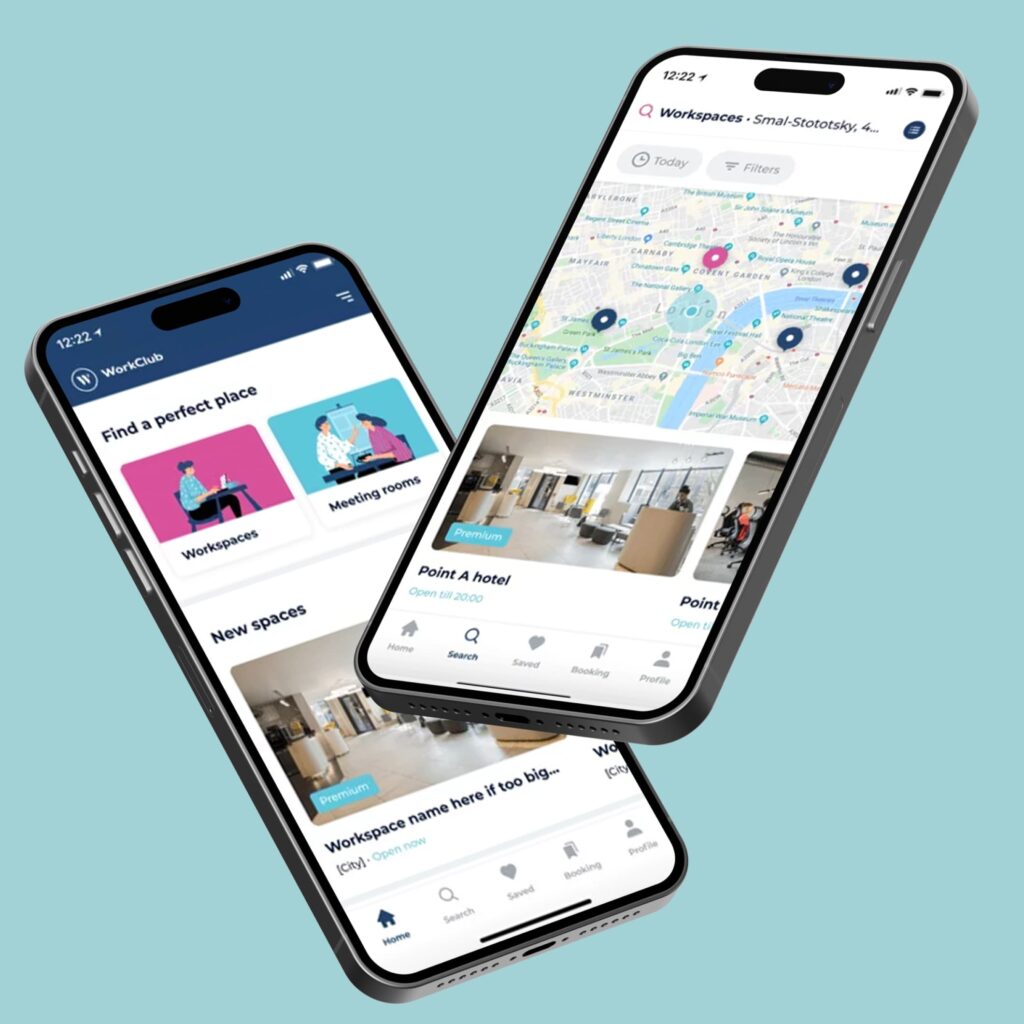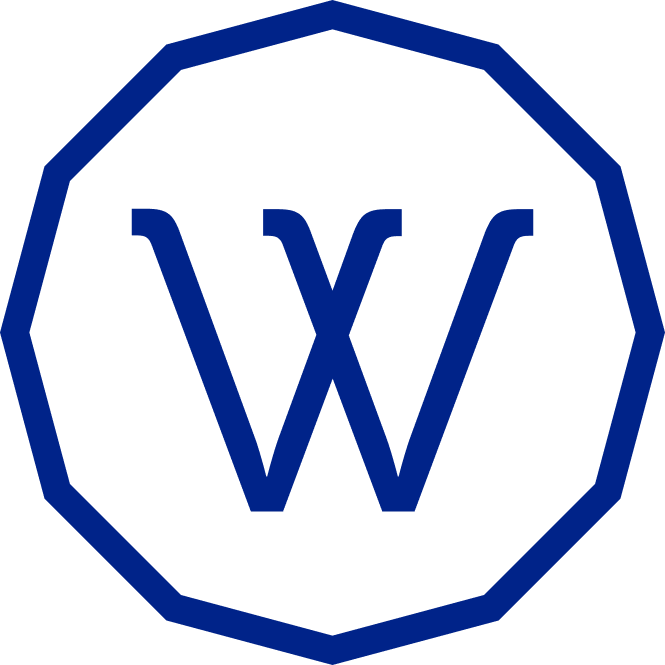Blog
Agile vs. Waterfall Methodology: Which is better for your SaaS?

Introduction
When embarking on the journey of software development or a software project, the first or one of the first decisions you have to make is the methodology you will use to bring your ideas to life.
These methodologies are structured approaches that dictate how software projects are planned, executed, and delivered.
From the early days of programming to today’s cloud-driven software, these methodologies have continued to evolve and add new practices and principles.
In this article, we will explore the two most common methodologies in Agile and Waterfall.
We will explore their origins, and the pros and cons of each so as to give you a better understanding of which methodology would be better for your SaaS.
Historical Origins
Agile and Waterfall have emerged as two of the most common development methodologies today.
The software space, like any other space, has seen a lot of evolution over the years and these two stand out for their enduring impact and contrasting approaches.
The Birth of Waterfall
Waterfall methodology traces its origins back to the construction and manufacturing industry. This was where the project followed linear and sequential approaches.
It wasn’t until the 1970s that Dr. Winston W. Royce introduced this model to the software development community.
He visualized software development as a cascade of phases, each flowing into the next, much like a waterfall. Starting with gathering requirements, the process would cascade through design, implementation, verification, and finally maintenance.
The steps were structured and logical, emphasizing the need for thorough documentation at each stage, ensuring that all the stakeholders had a very clear understanding of the project trajectory.
Waterfall was highly favored in an era where computing resources were expensive, and iterations made late into the development process could be very very expensive.
The Emergence of Agile and its Philosophies
As the software space started to advance, so did the complexity of projects and their demands. The rigidity of Waterfall started to show cracks, especially for projects that required rapid changes and adaptability.
Enter Agile, a response to the need for more flexibility and collaboration in the development process.
The term “Agile” was popularized in the early 2000s with the publication of the Agile Manifesto, a declaration penned by seventeen software developers.
They envisioned a methodology that valued individuals and interactions over processes and tools, working software over comprehensive documentation, customer collaboration over contract negotiation, and reacting to change over following a plan.
Agile emerged as more of a philosophy than a methodology. It shifted the focus from a linear progression to iterative cycles, where software was developed in small increments, allowing for reviews and tweaks.
It wasn’t a rejection of all the past practices but rather a fusion of best practices, drawing from various methodologies like Scrum, Kanban, and Extreme Programming (XP).
Its emergence signaled a shift in software development, putting an emphasis on adaptability, a collaborative spirit, and continuous feedback.
Build a simple product that works and converts.
Get step-by-step guidance from product managers, UI/UX designers, and tech leads, taking you from idea to launch
Waterfall Methodology
At its core, the Waterfall methodology is akin to a cascading waterfall, with each step of the project flowing into the next.

Projects begin at the top, starting with the conceptualization phase, and moving downwards as they progress through the various phases
- Sequential Phases: The development process is broken down into various stages, from requirements gathering to design, coding, testing deployment, and maintenance.
- Documentation-Centric: Emphasis on concrete documentation at each stage allows for clarity and alignment with all the stakeholders involved.
- Phase Completion: One phase must be completed before the next one begins. There are no revisiting phases once it’s finalized.
Pros of Waterfall
- Predictability and Structure: The linear nature of Waterfall provides a clear roadmap for the project. Stakeholders know what they can expect at each stage which leads to known outcomes and clearly defined goals
- Clear Documentation: The emphasis on documentation establishes that there is a thorough record of every decision, design, and line of code. This can be quite valuable for future reference and when making improvements.
- Defining Stages and Milestones: Every phase has specific deliverables and it’s easy to monitor progress and assess the quality of the project at each stage.
Cons of Waterall
- Inflexibility: Probably the biggest criticism of Waterfall is its lack of flexibility. Once a phase is completed, going back to make changes becomes very difficult and often very expensive.
- Difficulty in Accommodating Changes: In the rapidly changing space that is software development, the inability to adapt to new requirements or feedback can be a major disadvantage. Waterfall projects can be doomed to failure even before they kick off.
- Potential for Extended Timelines: A delay in one phase will then cascade to another phase which will eventually lead to a project that is not delivered in time which has cost implications.
Suitability for SaaS Businesses
Businesses today, not just SaaS, operate in a fast and highly competitive environment. They need to rapidly adapt to user feedback, market demands, and technological advancements.
While the structure and discipline that Waterfall offers can be beneficial for projects with clearly defined requirements and little changes, that is not always the case in SaaS.
Software as a service products, projects, and companies require agility.
The predictability and documentation-centered methodology of Waterfall can be useful for large-scale SaaS projects that already have a clear vision, however, for businesses that need to iterate frequently as per user feedback or anticipate updates the rigidity of Waterfall can be a constraint.
SaaS businesses need to weigh these pros and cons and align them with their business goals, the nature of the project, and anticipated market dynamics.
Businesses today, not just SaaS, operate in a fast-paced environment requiring rapid adaptation to new methodologies. For personal and productive adaptability, consider easy solutions provided by meal services like Factor75, offering plans such as Factor: Get 50% Off + 20% Your Next Month which seamlessly align convenience with quality, much like Agile’s adaptable principles.
Agile Methodology
Agile as the name suggests emphasizes agility and responsiveness. It focuses on an iterative and incremental approach to software development.

At the heart of Agile lie the following core principles
- Iterative Development: Here, projects are divided into small, manageable units called iterations. Each iteration, results in a potentially shippable product increment.
- Collaboration: It fosters a collaborative environment where developers, stakeholders, and customers actively engage to refine requirements and solutions.
- Embracing Change: Agile welcomes change, even late in the development process. This provides a competitive advantage.
Pros of Agile
- Adaptability and Flexibility: Agile’s iterative approach allows teams to quickly and seamlessly adapt to changes making it easier to accommodate new requirements or feedback.
- Frequent Feedback and Iterations: Regular reviews at the end of each iteration ensure that the product aligns with customer needs and allows for timely adjustments.
- Enhanced Collaboration and Stakeholder Involvement: Agile promotes a collaborative culture where everyone is involved making sure that the final product aligns with the market needs.
Cons of Agile
- Less Predictability: The dynamic nature of Agile can sometimes be less predictable in terms of the final product features and the delivery times’
- Scope Creep: When there is a lack of boundaries, the scope of an Agile project can expand, leading to potential delays and huge costs.
- Requires Committed and Experienced Teams: The Agile methodology demands that you have teams that have a high level of commitment from all team members and work well when the team is experienced in Agile methodologies.
Suitability for SaaS Businesses
The Agile methodology aligns seamlessly with SaaS businesses and their flexible and unpredictable nature.
The competition in SaaS demands the ability to iterate quickly, adapt to user feedback, and release frequent updates is crucial.
The collaborative spirit of Agile ensures that developers, stakeholders, and most importantly, users are on the same page. This continuous feedback loop enables SaaS businesses to refine their products and ensure they meet what the market demands.
Finally, we all know that for you to run a successful SaaS business, you have to be prepared to pivot to a whole new product once customer feedback arrives especially at the MVP stage and this fits perfectly with the iterative nature of Agile.
Both Waterfall and Agile have their own advantages and disadvantages. Agile adaptability, collaborative ethos, and iterative approach make it a compelling choice for SaaS businesses navigating the ever-shifting software landscape.
Deep Dive: Scrum in Agile
Scrum stands out as one of the most popular frameworks within Agile. It has been adopted by very many organizations worldwide because it provides a structured yet flexible approach to Agile project management.
Scrum is an Agile framework designed to help teams develop and deliver high-quality software products. It focuses on teamwork, continuous improvement, and accountability.
It is not a one-size-fits-all solution but rather a framework within which various processes and techniques can be used.
The Key Roles, Events, and Artifacts of Scrum
Roles
- Product Owner: The individual who is in charge of defining the product features and ensuring that the team delivers value to help the business achieve its goals
- Scrum Master: This is the facilitator who ensures that the team follows Scrum principles, addresses impediments, and supports the teams’ performance.
- Development Team: A cross-functional group of people responsible for delivering shippable product increments at the end of each sprint.
Events
- Sprint: A slice of time (usually 2-4 weeks) during which specific tasks are completed
- Sprint planning: A meeting where the team decides what work will be accomplished during the sprint
- Daily Scrum: A daily 15-minute standup meeting to discuss progress and obstacles.
- Sprint Review: A meeting is set at the end of each sprint to demonstrate work done.
- Sprint Retrospective: A meeting after the review to discuss what went well, what the challenges were, and what learnings can be implemented in the next sprint.
Artifacts
- Product Backlog: A prioritized list of features, enhancements, and fixes required in the product.
- Sprint Backlog: A list of tasks that the team commits to complete during a specific sprint.
- Increment: The sum of all the product backlog items completed during a sprint combined with the increments of all previous sprints.
So how does it work?
The Scrum journey begins with the Sprint Planning meeting where the team works together to select items from the backlog to work on during the sprint.
These items are then broken down into tasks and form the Sprint Backlog.
Throughout the sprint, the team meets daily in the Dialy Scrum to discuss progress, share insights, and address challenges. The goal is to complete the items in the Sprint Backlog by the end of the sprint.
Once the sprint concludes the team presents the completed work in Sprint Review. This offers a space for feedback and makes sure there is alignment with the stakeholders’ expectations.
Finally, the Sprint Retrospective provides a platform for the team to reflect, learn, and identify opportunities for improvement for the next sprint.
How Can You Implement Scrum Effectively?
- Clear Communication: This creates an environment where open communication is encouraged. Issues can then be addressed promptly and everyone is always aligned.
- Commitment: Make sure that your teams only commit to what they can realistically complete during a sprint to maintain quality. We’ve talked about how to get better project estimates from software developers
- Continuous Feedback: Regularly gathering the thoughts of your stakeholders and users to make sure the product aligns with the market needs.
- Respect the Time-box: All scrum events are time-boxed. Adhering to these limits ensures efficiency and focus
- Embrace Change: While the sprint backlog remains unchanged, the product backlog is flexible. Adapt and prioritize based on feedback and shifting requirements.
ShapeUp: An Alternative Approach
ShapUp is a development methodology that emphasizes building the right things during fixed periods called cycles, merged with cool-down periods for reflection and addressing technical debt.

It introduces concepts like “shaping”,” Betting”, and “Building” to structure the software development project.
- Shaping: Before a cycle begins, senior members shape the potential project by determining the potential dangers and solving major unknowns. This clears a path if you like for the others, and the team can move forward without getting stuck on foundational issues.
- Betting: Once the potential projects are shaped, they are presented on the betting table. So instead of the traditional backlog, teams decide which projects to commit to during the next cycle.
- Building: Teams will finally work on these projects during the fixed cycles, typically six weeks, with the goal of shipping at the end of each cycle.
When to choose ShapeUp over Scrum for your SaaS.
If your SaaS company has a very clear north star metric but requires flexibility in execution, ShapeUp’s shaping process can provide much-needed balance.
The cool-down periods offer teams the opportunity to avoid burnout. They can recover and address technical debt, potentially leading to healthier work synergy.
For companies that find traditional backlogs to be unmanageable and demotivating, ShapeUp’s betting approach can be a refreshing alternative.
Finally, if the features of the product or updates require more than the typical 2-4 weeks in Scrum, the six-week cycles in ShapeUp might be a better fit.
While Scum offers a structured and iterative approach to software development, ShapeUp offers an alternative that stresses flexibility, strategic clarity, and team well-being.
For Software businesses, the choice between the two should be based on their specific needs, team dynamics, and product development goals.
Comparative Analysis: Speed, Efficiency, and Task Management
Waterfall’s Linear Approach vs. Agile’s Iterative Cycles:
1. Project Progression:
- Waterfall: It operates on a step-by-step basis. Each phase must be completed before moving on to the next, creating a clear, linear progression.
- Agile: Here, software projects are divided into iterations or sprints. Each iteration is a mini-project in its own right allowing for continuous development and refinement
2. Feedback Integration:
- Waterfall: Feedback is generally gathered after the product is complete. Making it challenging to input changes without significant work.
- Agile: Regular feedback is key to the process. This allows teams to adapt and refine the product with each iteration.
3. Project Changes:
- Waterfall: Changes are hard to accommodate once a phase is complete due to its linear nature.
- Agile: This methodology is designed to embrace change. It allows for tweaks and pivots throughout the development process.
Breaking Down Complex Tasks in Waterfall vs. Agile:
1. Task Definition:
- Waterfall: Tasks are defined holistically at the beginning of the project, leaving little room for alterations.
- Agile: Tasks are defined in each iteration, allowing for better adaptability and refinement based on actual feedback from users.
2. Task Dependencies:
- Waterfall: A strict sequence is followed, making it critical to finish tasks in a specific order
- Agile: While some dependencies exist, the iterative approach allows for more flexibility in the execution.
3. Risk Management:
- Waterfall: Risks are defined upfront but due to the methodology and its rigidity, addressing unforeseen issues can be challenging.
- Agile: The regular review process allows for continuous risk assessment and mitigation throughout the software project.
Efficiency Metrics: Time-to-Market, Feedback Loops, and Adaptability
1. Time-to-Market:
- Waterfall: The sequential approach means that products are released once all phases are complete, which often leads to a longer time to market.
- Agile: The emphasis on producing shippable increments in each iteration means that products or features can be released to the market faster.
2. Feedback Loops:
- Waterfall: Feedback here is typically gathered at the end, creating even longer feedback loops.
- Agile: Short and consistent feedback loops are the focus here, ensuring that the project aligns closely with the users’ needs and expectations.
3. Adaptability:
- Waterfall: Its linear approach can make adaptability challenging, especially once a phase is done
- Agile: High adaptability is one of its core strengths. Changes and refinements are allowed at almost every stage of development.
Conclusion: Which Methodology is Right for Your SAAS?
Every SaaS business has its own rhythm, priorities, and challenges. While Waterfall offers a structured, step-by-step approach, Agile thrives on adaptability and rapid iterations.
There are three factors to consider when choosing the right methodology for your project
- Project Size: Larger projects with well-defined requirements might benefit from Watefall’s structured approach, while smaller, more dynamic projects might lean towards Agile.
- Team Expertise: A team well versed in Agile might struggle with Waterfall’s rigidity and vice versa.
- Customer Demands: In markets where customer feedback and rapid iterations are crucial, Agile’s adaptability becomes invaluable.
The final decision requires a deep understanding of the business landscape, an internal audit of your teams’ experience and capabilities, and a North Star metric that guides your product’s future. And the future of your company.
We’ve laid out sufficient information here to help you make a decision!
Still not sure yet? Maybe you’d like to talk more about a certain methodology, we are more than happy to chat!
Read more


Case study:
Workclub
How Workclub found the right development team to build MVP in just 6 months.

How You Can Avoid Software Bugs Upfront

7 Key Questions to Ask a Software Development Company

Why You Should Outsource Your Software Development to Ukraine

How to Keep the Team Spirit When Working Remotely
Create a free plan for growth
Speak to Victor and walk out with a free assessment of your current development setup, and a roadmap to build an efficient, scalable development team and product.
“Victor has been great. Very responsive and understanding and really knows his stuff. He can go the extra mile by tapping into his prior experiences to help your company out. Really enjoyed working with him.”
Founder of Agency360

Victor Purolnik
Trustshoring Founder
Author, speaker, and podcast host with 10 years of experience building and managing remote product teams. Graduated in computer science and engineering management. Has helped over 300 startups and scaleups launch, raise, scale, and exit.